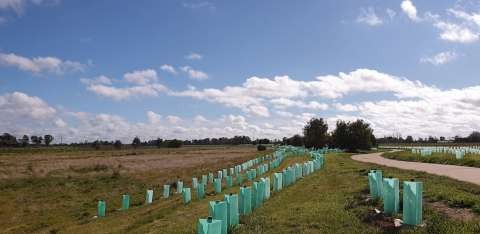Greater Shepparton City Council is currently seeking interest from residents to participate in the One Tree Per Child Project, by identifying suitably available roadside reserve areas with the capacity for planting local native indigenous trees, shrubs and grasses.

One Tree Per Child is a global project which aims to plant one indigenous plant for every child within the Municipality aged under 16. The program commenced in 2016 and has seen a total of 96,000 trees planted across Greater Shepparton. Greater Shepparton City Council's target for 2021 is to plant 25,500 plants.
One Tree Per Child will provide opportunities for every child in Greater Shepparton to see native plants grow for the benefit of the community and the environment.
Greater Shepparton City Council Mayor Councillor Kim O'Keeffe said "We would like to hear from residents who think native vegetation plantings can occur along their roadsides owned by Council, which have limited services/utilities. The aim of planting along our roadsides is to connect biodiversity corridors providing key habitats for our local fauna and to bring back our native vegetation, please let us know your suggestions," said Cr O'Keeffe
"The sites will be assessed by Council with consideration given to the Road Management Plan requirements, road safety, maintenance access to the site, protection or enhancement of existing vegetation and proximity to service assets. Once approved, plantings would occur from April through to September this year," Cr O'Keeffe said.
Considerations include:
- The edge of the planting area should be at least 9 metres from the centre of the road and 3 metres from a landholder's fence/boundary (minimum 12 metres from road centre line to fence = 1 row of plants)
- Rural areas/outside of any township/populated residential areas (beyond 80km zone)
- Minimum 80 metres from road intersections.
- Minimum 20 metres clearway from driveways and gates
- Will not disturb high value existing vegetation
- Avoidance of other infrastructure, including underground cables
Council will continue plant maintenance including watering, weeding and mowing for one year after initial planting.
A majority of the species planted have been indigenous shrubs and groundcovers that have been largely cleared from our region. The aim is to restore woodland species to provide habitat for woodland birds and other native fauna.
Let's plant a tree for every child and enjoy watching the trees grow as our children grow!






